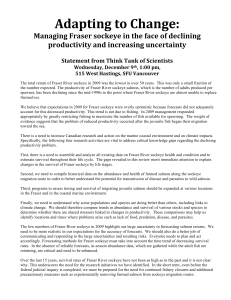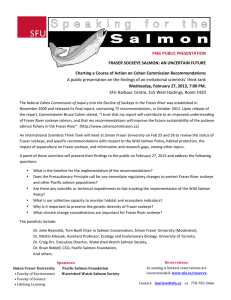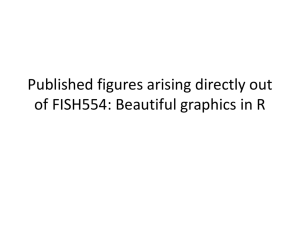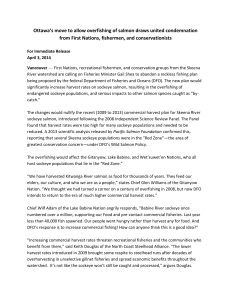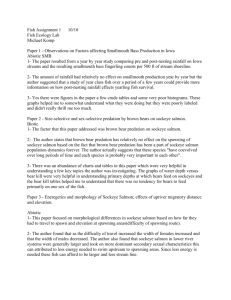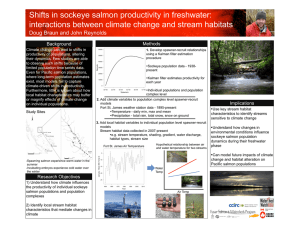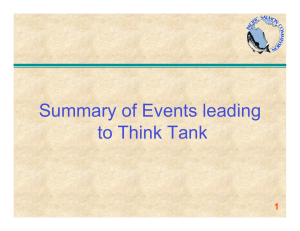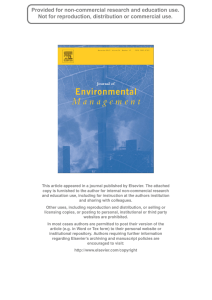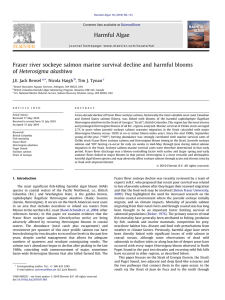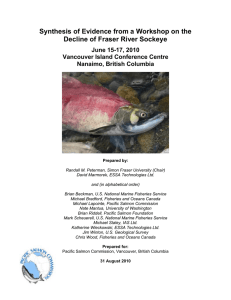Document 11268841
advertisement
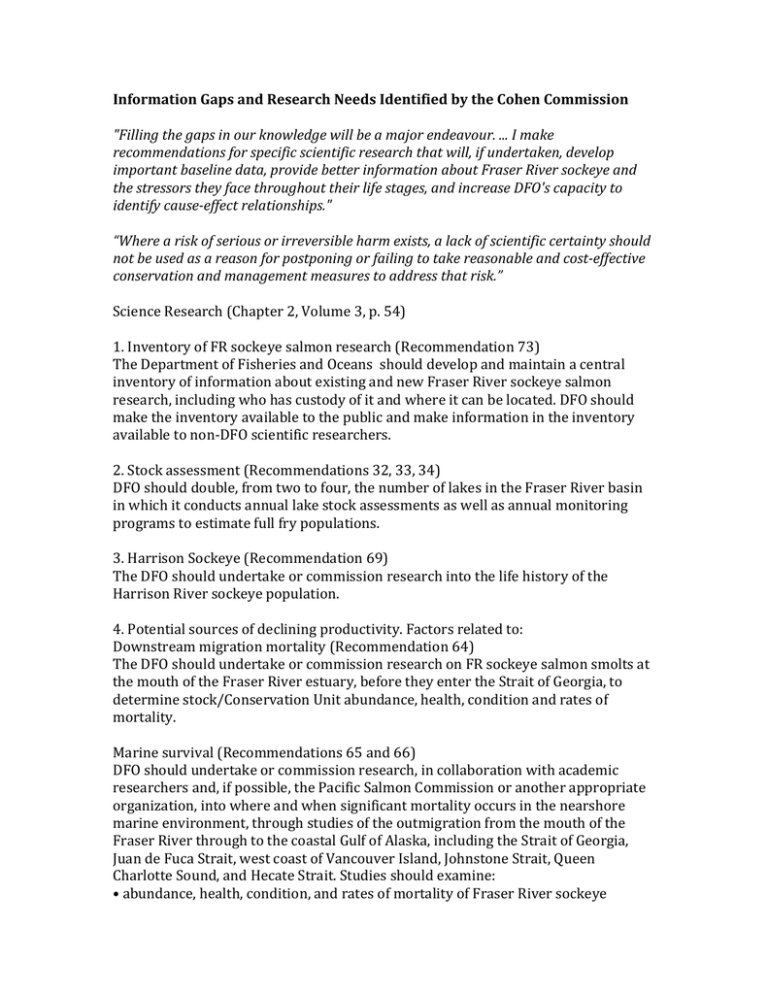
Information Gaps and Research Needs Identified by the Cohen Commission "Filling the gaps in our knowledge will be a major endeavour. ... I make recommendations for specific scientific research that will, if undertaken, develop important baseline data, provide better information about Fraser River sockeye and the stressors they face throughout their life stages, and increase DFO's capacity to identify cause-­‐effect relationships." “Where a risk of serious or irreversible harm exists, a lack of scientific certainty should not be used as a reason for postponing or failing to take reasonable and cost-­‐effective conservation and management measures to address that risk.” Science Research (Chapter 2, Volume 3, p. 54) 1. Inventory of FR sockeye salmon research (Recommendation 73) The Department of Fisheries and Oceans should develop and maintain a central inventory of information about existing and new Fraser River sockeye salmon research, including who has custody of it and where it can be located. DFO should make the inventory available to the public and make information in the inventory available to non-­‐DFO scientific researchers. 2. Stock assessment (Recommendations 32, 33, 34) DFO should double, from two to four, the number of lakes in the Fraser River basin in which it conducts annual lake stock assessments as well as annual monitoring programs to estimate full fry populations. 3. Harrison Sockeye (Recommendation 69) The DFO should undertake or commission research into the life history of the Harrison River sockeye population. 4. Potential sources of declining productivity. Factors related to: Downstream migration mortality (Recommendation 64) The DFO should undertake or commission research on FR sockeye salmon smolts at the mouth of the Fraser River estuary, before they enter the Strait of Georgia, to determine stock/Conservation Unit abundance, health, condition and rates of mortality. Marine survival (Recommendations 65 and 66) DFO should undertake or commission research, in collaboration with academic researchers and, if possible, the Pacific Salmon Commission or another appropriate organization, into where and when significant mortality occurs in the nearshore marine environment, through studies of the outmigration from the mouth of the Fraser River through to the coastal Gulf of Alaska, including the Strait of Georgia, Juan de Fuca Strait, west coast of Vancouver Island, Johnstone Strait, Queen Charlotte Sound, and Hecate Strait. Studies should examine: • abundance, health, condition, and rates of mortality of Fraser River sockeye salmon; • biological, chemical and physical oceanographic variables, including water temperature, the presence or absence of harmful algal blooms, and disease; • predators, pathogens, competition, and interactions with enhanced salmon affecting Fraser River sockeye salmon; and • contaminants, especially contaminants of emerging concern, endocrine-­‐disrupting chemicals, and complex mixtures. (65) In furtherance of Canada’s understanding about what regulates Fraser River sockeye abundance and distribution, Canada should propose an international, integrated ecosystem research program to measure biological, chemical, and physical oceanographic variables in the offshore Gulf of Alaska. Some or all of the research would be conducted in collaboration with academic researchers, the North Pacific Marine Science Organization (PICES), and/or the North Pacific Anadromous Fish Commission. (66) Regional Production Dynamics (Recommendation 70) DFO should initiate, along with the appropriate state agencies in Oregon, Washington, and Alaska, a long-­‐term working group devoted to coordinating the collection and analysis of data on the productivity of their sockeye salmon populations. The working group should invite a knowledgeable and independent entity, such as the Pacific Salmon Commission, to act as coordinator for the working group. 5. Fish Health (Recommendations 67, 68) The fish health research priorities of DFO should reflect its responsibility for the conservation of wild fish. To that end, DFO’s science managers should encourage innovation and new research into novel diseases and other conditions affecting wild fish, beyond the interests of specific ‘clients’ such as the Canadian Food Inspection Agency or aquaculture management. (67) DFO should undertake or commission research into the health of Fraser River sockeye salmon, including the following issues: • determining, in conjunction with the research proposed in Recommendations 64 and 65, what pathogens are encountered by Fraser River sockeye salmon along their entire migratory route, and cumulative effects of these pathogens on Fraser River sockeye salmon; • the hypothesis that diseases are transmitted from farmed salmon to wild sockeye; • the hypothesis that diseases are transmitted from salmonid enhancement facility salmon to wild sockeye; and • the thresholds of sea lice infection and resilience in sockeye and the patterns of sea lice distribution and infection on juvenile sockeye. (68) 6. Cumulative Effects (Recommendation 71) DFO should develop and carry out a research strategy to assess the cumulative effects of stressors on Fraser River sockeye and their habitats. Cumulative effects may include multiple sources of a stressor, exposure to stressors over the life cycle of Fraser River sockeye, or exposure to multiple types of stressors interacting in a cumulative manner. 7. Climate change (Recommendation 74) Effects will likely have a negative impact on Fraser River sockeye salmon during all their life stages. To improve future sustainability of FR sockeye Canada should champion reasonable steps to address causes of warming waters and climate change. "We are now into a new paradigm with increased unpredictability leading the way."
